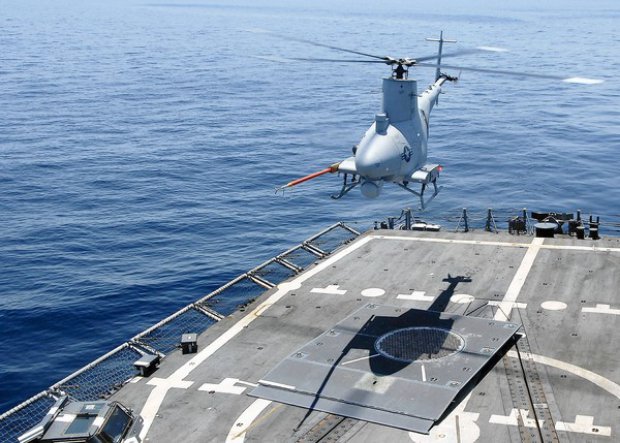The US Navy’s first composite squadron equipped with manned and unmanned rotary-wing aircraft for expeditionary missions will take root in San Diego next year.
Helicopter Maritime Strike Squadron 35 will be the first to support littoral combat ships and other Pacific Fleet ships with both the MH-60R Seahawk helicopter and the MQ-8B Fire Scout, a vertical takeoff unmanned aircraft.
The Navy will stand up a pre-establishment unit July 1 at Naval Air Station North Island, California, with a “core” command group, then grow the squadron in phases over the next year, according to a Nov. 2 OPNAV notice. It will fall under Helicopter Maritime Strike Wing Pacific.
By the summer of 2013, “it will be a full-up-round squadron,” said Senior Chief Mass Communications Specialist (SW/AW) Dave Nagle, a Naval Air Forces spokesman.
The composite squadron — its nickname will be “Magicians” — will deploy detachments of both aircraft to LCSs, cruisers, destroyers and frigates in a new configuration that won’t require many more personnel than existing helicopter squadrons.
“It will look like a regular squadron, but everybody will be cross-trained to handle both of these platforms,” Nagle said.
So squadron personnel accustomed to flying, maintaining and fixing Seahawks will have to maintain the drones as well as ground control stations and recovery systems that will be installed aboard the ships.
But it’s not yet clear what type of cross-training those officers and enlisted members will get as they transition to a composite squadron. AIRFOR officials said no decision has been made yet on the training, and the decision whether to allow enlisted to be trained as pilots to “fly” the drones is pending.
“The concept would be that all personnel assigned to HSM-35 would get the training en route before reporting aboard,” Nagle said. That cross-training will give squadron and detachment leaders the flexibility in assigning personnel, including crew who will be trained to fly the autonomous drones.
The Navy hasn’t determined yet how many drones and helicopters will be in the squadron. “It’s a little too early in the process,” Nagle said.
“The number of aircraft assigned to a squadron is based on the squadron’s mission set. No two HSM squadrons are alike,” he said. “So a squadron like HSM-35, which would support LCS, wouldn’t have the same number of ‘60s as, say, an HSM squadron that embarks with a carrier air wing.”
Fire Scout, with four 15-foot rotor blades that fold up, looks like a mini-helicopter and is about the weight and size of a Volkswagen Beetle. Three drones, when stowed, fit into the footprint of one Seahawk, according to Northrop-Grumman, the prime contractor.
The Navy plans to buy 168 of the drones and use Fire Scout for anti-submarine, mine and surface warfare missions.
Source: Navy Times

